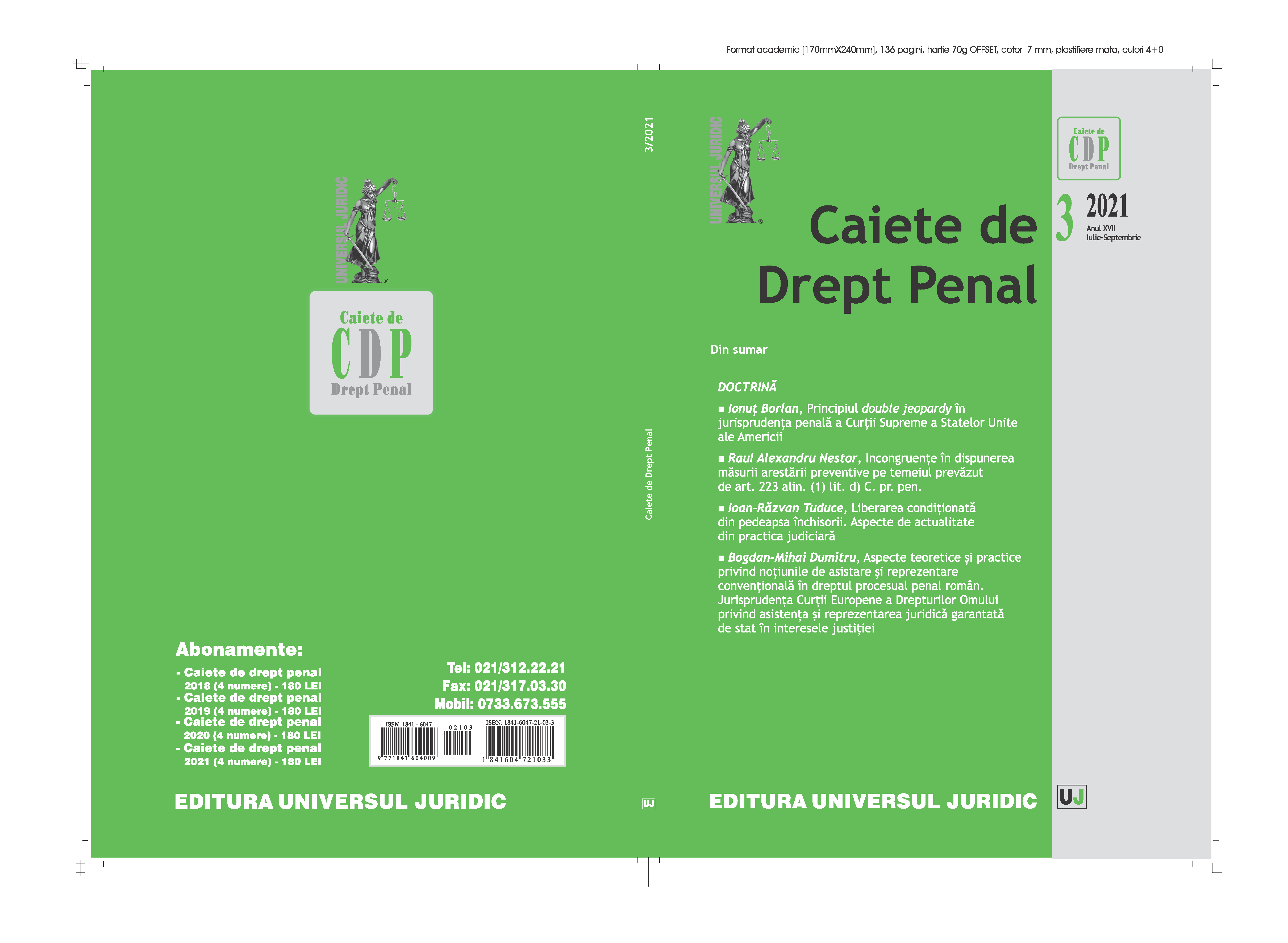Principiul double jeopardy în jurisprudenţa penală a Curţii Supreme a Statelor Unite ale Americii
The double jeopardy clause in the criminal case law of the Supreme Court of the United States of America
Author(s): Ionuţ BorlanSubject(s): Law, Constitution, Jurisprudence, Civil Law
Published by: Universul Juridic
Keywords: double jeopardy; merger doctrine; dual-sovereignty doctrine; Palko v. Connecticut; Benton v. Maryland; Ex parte Lange; North Carolina v. Pearce; Hudson v. United States; Ashe v. Swenson;
Summary/Abstract: The constitutional recognition of general principles designed to ensure the proper conduct of the criminal trial is an essential condition in a democratic state. Of the general rules that the United States Constitution regulates, by far the most controversial is the rule that prohibits anyone from being prosecuted and/or sanctioned twice for the same crime, known as double jeopardy, which was not accidentally named symbolically in the literature as the “gordian knot” or the “many-headed hydra”. In a system based mainly on the judicial precedent, the principle of double jeopardy has been constantly evolving in the criminal case law of the Supreme Court of the United States in the context of the development of American federalism, being marked, not infrequently, by more or less expected turns which hit the judiciary hard. The constitutional enshrinement of a rule that was intended to simply express the idea that no person can be tried and/or sanctioned twice for the same crime has proved to be a far more complex issue to allow the evolution of judicial practice in a unitary direction. This is why the criminal jurisprudence of the American courts in this area is considered to be a veritable Sargasso Sea which could not fail to challenge the most intrepid judicial navigator. The role of the Supreme Court in ensuring the unitary character of the case law was of particular importance, but not infrequently the Supreme Court was put in difficult situations. Thus, after a constant application for 58 years of a decision finally issued in 1932 and intended to be used to identify “the same crime”, the Supreme Court ruled in a different manner regarding the application of the double jeopardy clause, so that after only 3 years it returned to the previous jurisprudence. Through this study we propose an almost exhaustive analysis of the double jeopardy clause from the perspective of its evolution, its scope, the development of the society and the influence of federalism in judicial practice and also the limits of this principle.
Journal: Caiete de drept penal
- Issue Year: 2021
- Issue No: 03
- Page Range: 9-71
- Page Count: 63
- Language: Romanian
- Content File-PDF

